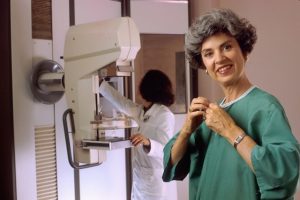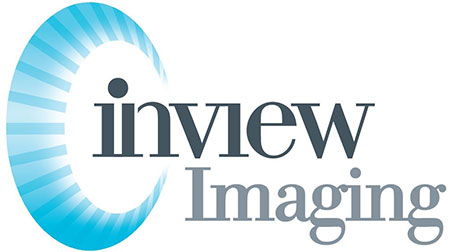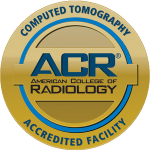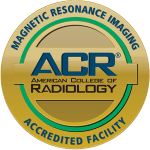Discover everything you need to know about mammography, from its importance in early detection to the latest advancements in technology. Dive into the benefits of regular screenings, debunk common myths, and explore how this vital tool aids in the fight against breast cancer with high quality mammography. Stay informed on the process, frequency recommendations, and why high quality mammography screening is crucial for women’s health. Get ready to empower yourself with knowledge and take charge of your well-being.
Key Takeaways

-
Follow screening guidelines based on your age to ensure timely detection of breast cancer.
-
Mammograms are crucial for spotting early signs of breast cancer when treatment is most effective.
-
Regular mammography screenings can significantly increase survival rates by detecting cancer at earlier stages.
-
Be aware that false positive results from mammograms may lead to anxiety and unnecessary follow-up tests.
-
Understand that the accuracy of mammograms can be impacted by dense breast tissue, requiring additional screening methods.
-
Family history plays a key role in assessing your risk for breast cancer; inform your healthcare provider for tailored recommendations.
1. Screening guidelines vary by age
Screening guidelines for mammography vary by age, emphasizing the importance of tailored recommendations to optimize breast cancer detection. For women aged 40 and above, yearly mammograms are typically recommended to detect any potential abnormalities early on. This proactive approach can significantly increase the chances of successful treatment and improved outcomes.
As women age, the recommendations may shift, considering factors such as individual risk profiles and breast health history. Even for women over 74, it is crucial to continue with regular screenings due to the increased breast cancer risk associated with aging. By adhering to these guidelines, older women can ensure that any signs of breast cancer are promptly identified and addressed.
Moreover, personalized recommendations are essential for women with dense breast tissue, as it can pose challenges in detecting abnormalities through standard mammograms. In such cases, additional screening methods or more frequent mammograms may be advised to enhance the accuracy of early detection efforts.
2. Mammograms can detect early signs
Mammograms play a crucial role in detecting abnormalities in breast tissue at an early stage. By utilizing mammogram screening, healthcare providers can identify potential issues before they progress into more serious conditions. This early detection is paramount in enhancing treatment options and ultimately improving outcomes for patients.
Regular screening mammograms are instrumental in uncovering smaller tumors that may not be noticeable through physical examinations. Detecting these smaller tumors early significantly increases the chances of successful treatment and recovery. Moreover, quality screening mammograms can also help in identifying other breast health concerns beyond cancer, allowing for timely intervention and management.
Receiving regular mammograms, including baseline screening mammograms, is essential for maintaining breast health. The findings from these screenings provide valuable insights into any changes in breast tissue over time, enabling healthcare professionals to track developments and intervene promptly if necessary. Positive mammogram results can lead to further diagnostic tests and early treatment initiation when needed.
In essence, the significance of regular mammogram appointments cannot be overstated. They offer a proactive approach to monitoring breast health, ensuring that any abnormalities are detected early on when they are most treatable. By prioritizing quality mammograms and adhering to recommended screening schedules, individuals can take proactive steps towards safeguarding their breast health effectively.
3. Regular screenings improve survival rates
Regular mammography screenings play a crucial role in improving survival rates for breast cancer patients. By detecting abnormalities at an early stage, these screenings significantly contribute to reducing mortality rates associated with breast cancer.
Medical organizations universally recommend regular mammograms as one of the most effective breast cancer screening strategies. According to a randomized breast screening trial, consistent screenings can lead to early detection, enabling timely intervention and increasing the chances of successful treatment outcomes.
Early detection through mammography allows healthcare providers to identify cancer in its initial stages when it is most treatable. This not only enhances the quality of life for patients but also reduces the need for aggressive treatment options such as chemotherapy or extensive surgeries.
Studies have shown that women who undergo regular mammograms are more likely to have their breast cancer detected at an earlier stage compared to those who do not participate in screening programs. This underscores the importance of prioritizing routine mammography as part of preventive healthcare measures.
In essence, regular mammography screenings are instrumental in improving survival rates by facilitating early detection and timely treatment interventions for breast cancer patients.
4. False positives can cause anxiety
False positives in mammography screenings are not uncommon and can cause significant anxiety among women. While false positives occur when an initial mammogram suggests the presence of cancer, subsequent tests prove otherwise, they can lead to unnecessary stress and additional medical procedures.
It’s essential for women to understand that false positives are part of the screening process and do not always indicate cancer. Staying informed about the possibility of false positives and their implications can help alleviate some of the anxiety associated with such results.
Coping Strategies for Managing Anxiety:
-
Seeking support: Talking to friends, family, or a counselor can provide emotional relief during this stressful time.
-
Educating oneself: Learning more about the prevalence of false positives in mammography screenings can help women feel more prepared and less anxious.
-
Engaging in relaxation techniques: Practices such as deep breathing, meditation, or yoga can help reduce anxiety levels.
-
Maintaining a healthy lifestyle: Regular exercise, balanced nutrition, and sufficient sleep play a crucial role in managing stress and anxiety.
Understanding that false positives are a common occurrence in mammography screenings and adopting strategies to cope with the resulting anxiety can help women navigate the screening process with greater peace of mind.
5. Dense breast tissue affects accuracy
Dense breast tissue can obscure cancer detection on mammograms, making it challenging to identify abnormalities accurately. For women with dense breasts, additional imaging methods such as ultrasound or MRI are recommended to complement mammography results. These supplemental screenings can provide a clearer picture of the breast tissue and increase the chances of detecting any underlying issues that might be masked by density.
Understanding breast density is crucial for interpreting mammogram results accurately. Breast density refers to the amount of glandular and fibrous tissue compared to fatty tissue in the breast. Women with dense breasts have more glandular and fibrous tissue, which appears white on a mammogram, similar to potential tumors or cancerous growths. This similarity in appearance can lead to false positives or missed detections, highlighting the importance of considering breast density when evaluating mammograms.
In cases where dense breast tissue affects accuracy, healthcare providers may recommend additional imaging tests to ensure a comprehensive assessment of the breast health. By combining multiple screening methods tailored to individual breast characteristics, healthcare professionals can enhance the detection of potential issues and provide more personalized care for patients with dense breasts.
6. Family history impacts risk assessment
Family history plays a crucial role in assessing an individual’s risk of breast cancer. Having a close relative diagnosed with breast cancer can significantly elevate one’s risk level, indicating a possible genetic predisposition to the disease. It is essential for women with a family history of breast cancer to be proactive about their health and seek guidance from healthcare providers for personalized screening plans.
Consulting healthcare providers allows for tailored screening recommendations that take into account the specific risk factors associated with a family history of breast cancer. This proactive approach can lead to early detection and better outcomes in case breast cancer is diagnosed.
During health assessments, sharing detailed information about family medical history is paramount. This information helps healthcare professionals understand the individual’s risk profile better and recommend appropriate screening measures. By being transparent about family history, individuals can empower themselves with knowledge that can potentially save lives through early detection and timely interventions.
7. Digital mammography enhances detection
Digital mammography stands out for its clearer images compared to traditional methods, allowing for more accurate detection of abnormalities in breast tissue. The advancement in technology, particularly the integration of artificial intelligence, has significantly improved the accuracy of readings from digital mammograms. This means that healthcare providers can now detect potential issues with higher precision, leading to better outcomes for patients.
One key advantage of digital mammography is the reduced radiation exposure it offers compared to conventional techniques. This reduction in radiation exposure not only prioritizes patient safety but also ensures that individuals undergoing diagnostic mammograms are exposed to minimal risk during the screening process.
Moreover, modernizing breast cancer mammography through digital technologies has revolutionized the way mammography results are interpreted and analyzed. The quality of mammography facilities has been elevated, aligning with stringent mammography quality standards set by regulatory bodies. These advancements have not only enhanced the overall experience for patients but also increased the reliability and accuracy of diagnostic procedures.
In summary, digital mammography has transformed the landscape of breast cancer detection by providing clearer images, leveraging artificial intelligence for precise readings, and reducing radiation exposure, ultimately leading to improved diagnostic accuracy and patient outcomes.
8. Compression during the exam is necessary
Breast compression during a mammogram is crucial for obtaining high-quality images that can aid in accurate detection of abnormalities. While the idea of compression might seem uncomfortable, it is a necessary step that plays a vital role in the effectiveness of the exam. Proper compression helps in spreading out breast tissue, reducing motion blur, and ensuring that all areas are thoroughly examined.
-
Improved Image Quality: Compression flattens the breast, reducing overlapping of tissues and enhancing image clarity.
-
Enhanced Detection: By spreading out breast tissue, compression helps in detecting smaller abnormalities that may not be visible without it.
-
Reduced Radiation Exposure: Proper compression allows for shorter exposure time to radiation, minimizing potential risks.
Although it may cause temporary discomfort, the compression lasts only for a few seconds during the imaging process. The technologist performing the mammogram will ensure that the pressure applied is appropriate for each individual, balancing between achieving optimal images and ensuring patient comfort.
Studies have shown that adequate compression significantly improves the accuracy of mammogram results, leading to early detection of breast cancer and potentially saving lives. Therefore, understanding the importance of compression during a mammogram can help individuals appreciate its necessity in ensuring thorough and effective screening.
9. Follow-up tests may be required
When abnormalities are detected during a mammogram, additional tests such as ultrasounds or biopsies may be necessary. This is a standard procedure to ensure an accurate diagnosis and provide the best possible care for patients.
Follow-up testing plays a crucial role in confirming or ruling out any potential issues identified in the initial mammogram. It helps healthcare providers make informed decisions about the next steps in treatment or monitoring.
It is essential for women to understand that follow-up tests are a routine part of the mammography process and should not cause unnecessary alarm. Open communication with healthcare providers is key, allowing women to voice any concerns they may have about the need for further testing.
In the United States, there are specific regulations and guidelines in place to ensure that follow-up testing is conducted promptly and effectively. These regulations aim to prioritize patient well-being and provide timely interventions when necessary.
10. Discuss results with your healthcare provider
When it comes to mammography, one crucial step after undergoing a mammogram is to discuss results with your healthcare provider. This action holds significant importance in ensuring a clear understanding of the findings and their implications for your health. By engaging in this discussion, you can gain valuable insights and guidance tailored to your specific situation.
Empowerment through knowledge: Understanding your mammogram results empowers you to make informed decisions about your health. It allows you to actively participate in your healthcare journey by being aware of any potential issues detected during the screening. This knowledge equips you to take proactive steps towards maintaining your well-being.
Open communication: Openly communicating with your healthcare provider about your mammogram results fosters a supportive environment where you can address any questions or concerns that may arise. This dialogue enables you to seek clarification on any confusing aspects of the report, ensuring that you are well-informed about the next steps or recommended follow-up procedures.
In essence, the process of reviewing mammogram results with your healthcare provider serves as a pivotal moment in your health management. It not only enhances your understanding of the screening outcomes but also strengthens your ability to advocate for your own well-being. Remember, open dialogue and clarity are key components in navigating your health journey effectively.
Final Remarks
Regular mammograms are crucial for detecting breast cancer early, improving survival rates significantly. However, false positives and the impact of dense breast tissue can lead to anxiety and affect accuracy. Considering your family history is vital for a more precise risk assessment. Digital mammography enhances detection capabilities, but remember that compression during the exam is necessary for accurate results. Be prepared for the possibility of follow-up tests and ensure to discuss your results thoroughly with your healthcare provider.
Stay proactive about your breast health by following the recommended screening guidelines and staying informed about advancements in mammography technology. Your commitment to regular screenings and open communication with your healthcare team can make a significant difference in detecting and treating breast cancer effectively.
Frequently Asked Questions
What age should I start getting mammograms?
Start mammograms at age 40 or earlier if you have risk factors. Regular screenings can detect breast cancer early when treatment is most effective.
How often should I have a mammogram?
Annual mammograms are recommended for women starting at age 40. Regular screenings help improve survival rates by detecting breast cancer in its early stages.
What should I do if my mammogram results show a false positive?
If you receive a false positive result, it may cause anxiety. Follow-up tests are usually required to confirm the findings and ensure accurate diagnosis.
How does family history impact breast cancer risk assessment?
Family history plays a crucial role in assessing your risk of breast cancer. Inform your healthcare provider about any family history of breast cancer for proper evaluation and screening recommendations.
Why is compression necessary during a mammogram?
Compression helps spread out the breast tissue for a clearer image and more accurate detection of abnormalities. It may cause brief discomfort but is essential for an effective mammogram.


